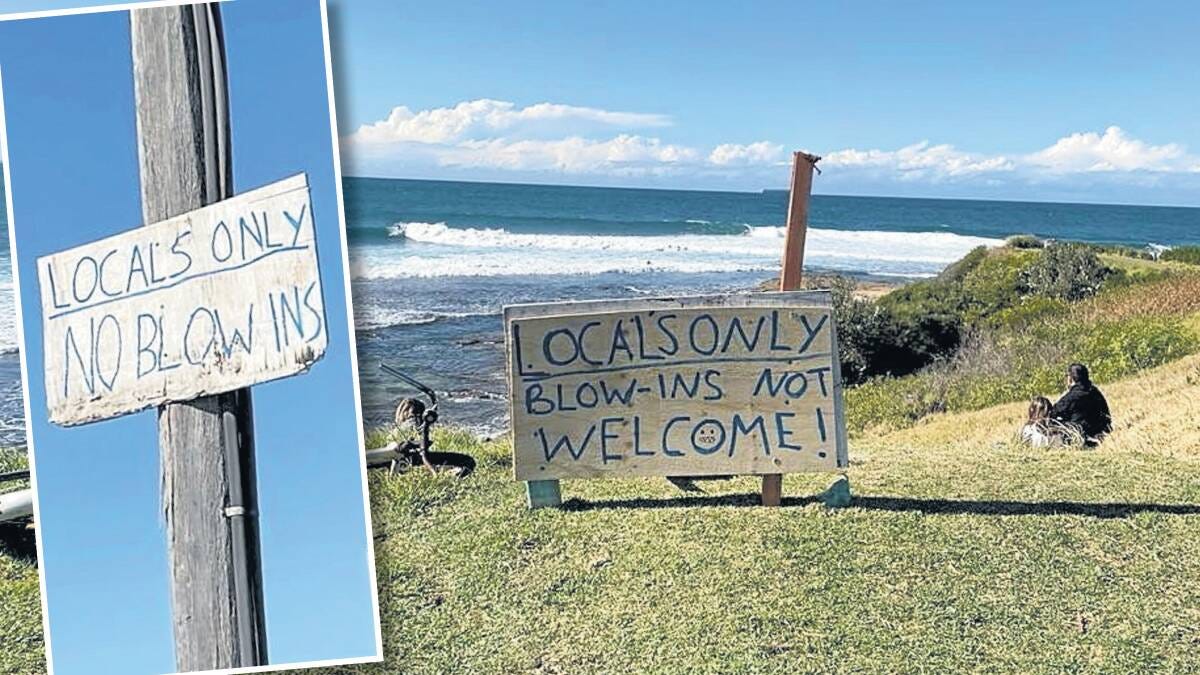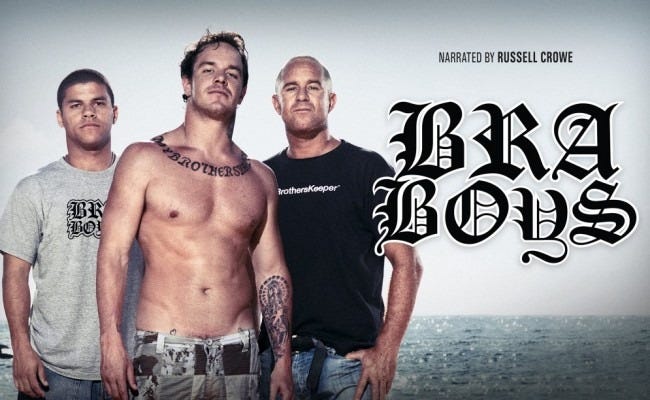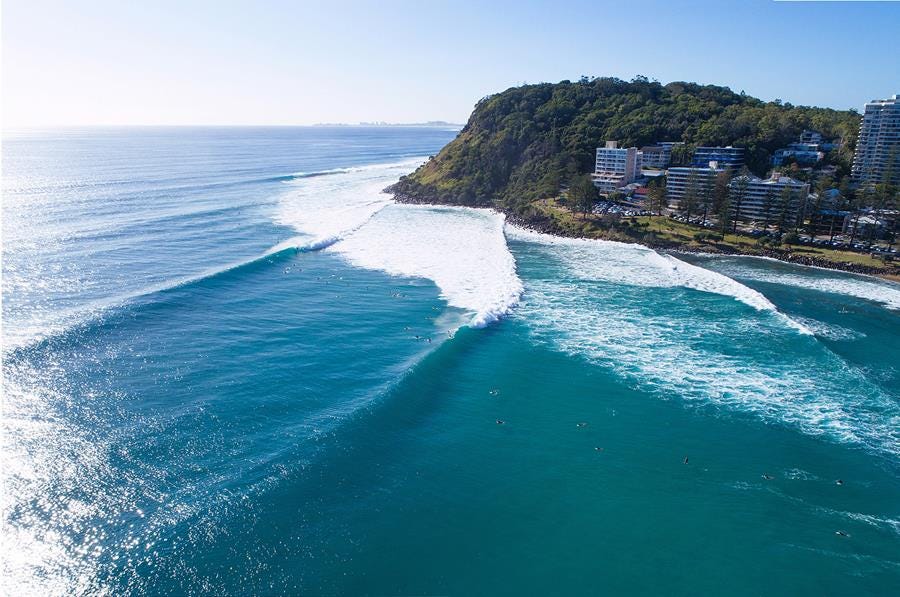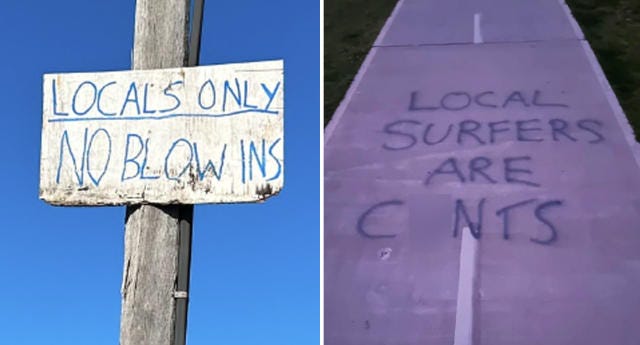Cliff The Cunt and World’s Most Localised Waves: Part 2 Australia
If a local be here, don't be there.
“Last year this guy poured a coffee in X’s face and threatened to bury him in the nearby hills if he ever caught him surfing there.”
That was a reliable source recounting a recent example of extreme surfing localism. Now the coffee pourer is known as Cliff the Cunt. It is a name, you sense, that wasn’t given ironically.
That he is “protecting” a short, fickle, gutless, low-quality wave that is surfed in polluted, freezing water in howling onshores, adjacent to a McDonalds and ASDA Superstore makes this form of localism, even more deranged. And yet, like stand-up bodyboarding, racism and anal sex, just cause its irrational, doesn't mean it doesn’t exist.
It seems Cliff’s Spot X, can be added to my recent post of Europe’s most localised waves. Many subscribers added a few I’d missed; Rodielles in Spain, most of Madeira and a load of spots in the Algarve.
Anyway, localism, unlike Germans, Brexit and Pompeii, isn’t confined to Europe. I grew up in Australia, and there it is a coherent, integral and daily part of surfing. Yet the Cliffs at these spots listed below have really elevated the art form.
The Dunny Bowl at Maroubra
Maroubra is located in the eastern suburbs of Sydney, a straightened horseshoe of a beach, that provides half-decent, onshore wind-protected peaks along its one-kilometre stretch. The most consistent, and best, of the waves is in the northern end, where a rip bowl breaks in front of the toilet block (known as a dunny in Australian slang) providing sharper rights and longer lefts. Its relatively tightly packed take-off zone, with talented surfers, in one of Australia’s most high-density population zones, would have already made it a tough nut to crack. However, with this break being the spiritual home of the Bra Boys, whose tattooed form of hyper-localism has been well documented, makes it basically impenetrable. You can paddle out, and while you might always get a g’day and a smile, you rarely will get a wave.
Jakes Point, Kalbarri
Like a walled fort on a Tuscan Hill or a moated castle on Scottish Highland, Jakes Point is seemingly designed to keep foreign invaders from breaching its significant defences. Located in Kalbarri, 400 miles north of Perth, is not only the world-class wave in the town with a population of 1500, but the only well-known one for 100-odd miles in either direction. It also really only breaks in winter, with locals having to endure hot, thirsty and waveless summers and springs before it bursts into life. Then there is the wave itself. Long, powerful Indian Ocean lines unload on a shallow shelf, just feet from dry rock, then grow in size as it throaty-barells down the line. The only semi-safe entry point is at the very tip of the point, a three-metre squared area two feet from dry rock and held down by multi-generations of ridiculously talented and hard-charging surfers who moonlight as grizzled lobster divers, pub owners, fishermen, muscled mine workers and solar panel installers. They are a friendly bunch on the whole, who will often give the respectful visitor the odd imperfect six-foot set wave that can make your year.
Burleigh Point
Burleigh has always had a fierce reputation. The famous “Burleigh Barrell” is the flip side to the infamous “Burleigh Burning”. The Cove, the top section of the boulder-lined point, is where the long-term locals attempt to maintain some type of order in one of the most transient surf populations in the world. You can understand their behaviour. A look south to the Superbank shows the chaos that can reign when the established surfing norms and line-up etiquette are shredded. Enforcement comes in the form of pure surfing talent (Burleigh’s lineage from the Nielson Brothers, Munga Barry, Dave Rastavich to current CT surfer Liam O’Brien) to old-school aggression. Often it’s a hard-to-combat version of both.
Port Campbell The Great Ocean Road
“Your crime, Rip Curl, was to bring the circus to a fragile pristine area of the Port Campbell National Park with only a token effort to protect the place.” That was a letter from Port Campbell Boardriders written in 2003 to an Australian Surfing World. It started what was coined a “No Exposure” policy to the waves around Port Campbell, on Victoria’s Great Ocean Road. Now the locals will say it was a call for broad-based censorship of coverage of local waves, rather than the surfing of them. It might be an arbitrary distinction, though, and one that might not be needed. As Australian writer Jock Serong said, “What has protected this place for years is not the time-honoured tradition of deliberately mangling its name, but the hard, cold fact that there’s very few around who have the equipment and the will to mess with it.”
The waves are big, cold, sharks, and uhm, big. Still if you rock up with a crowd (ie not alone), or bring a photographer, the sharks will be the least of your worries.
Sandon Point
Back in 2003, Sandon Point was named by Tracks magazine as one of the worst places to visit as a surfing outsider. 20 years on it seems the locals are keen to hang on to the gong. In June 2023, local media picked up on homemade signs that had been written and hung up by local surfers near the righthand pointbreak. “Locals only: Blow Ins Not Welcome” read the crude signs. It was safe to say the police could rule out any local signwriters or artists. The point is one of the rare spots on that stretch of coast that can handle strong south swells and winds, and often attracts visiting surfers from Sydney, about a 90-minute drive north. These “blow-ins” get short thrift, and even if you are good enough to negotiate the shallow outside ledge and slabbing, but irregular tubes on the 200-yard racetrack, the pack of talented, hard-charging locals like to keep it a closed shop.








Ha, it has a certain ring to it, doesn't it!
What a proper cunt